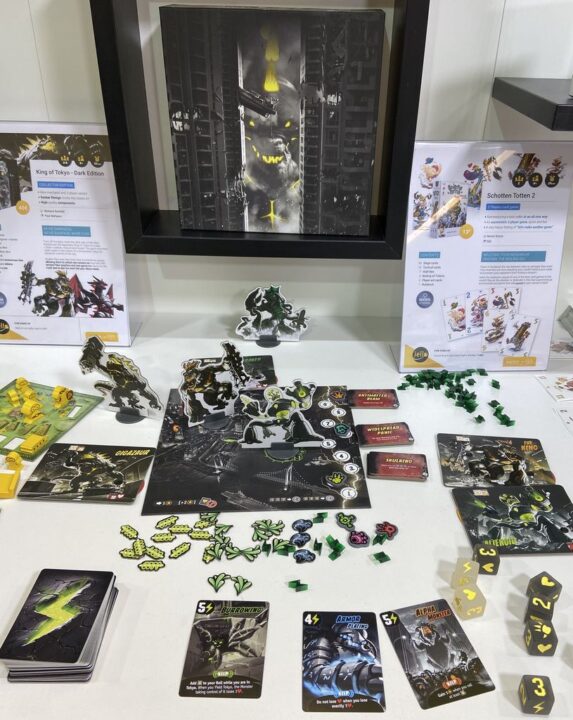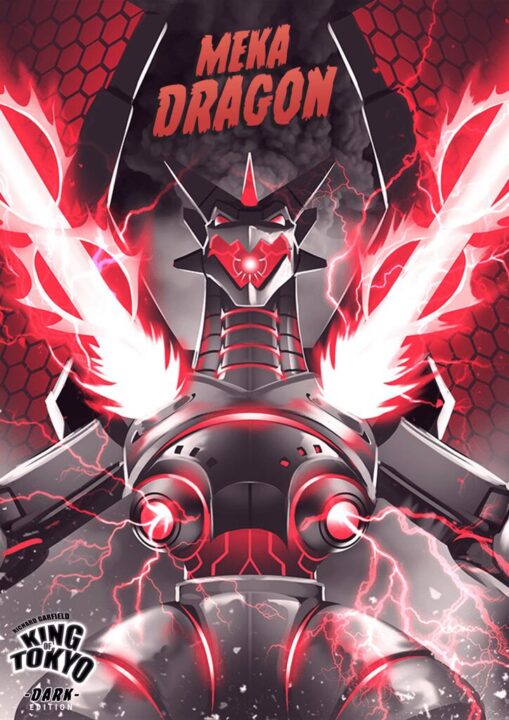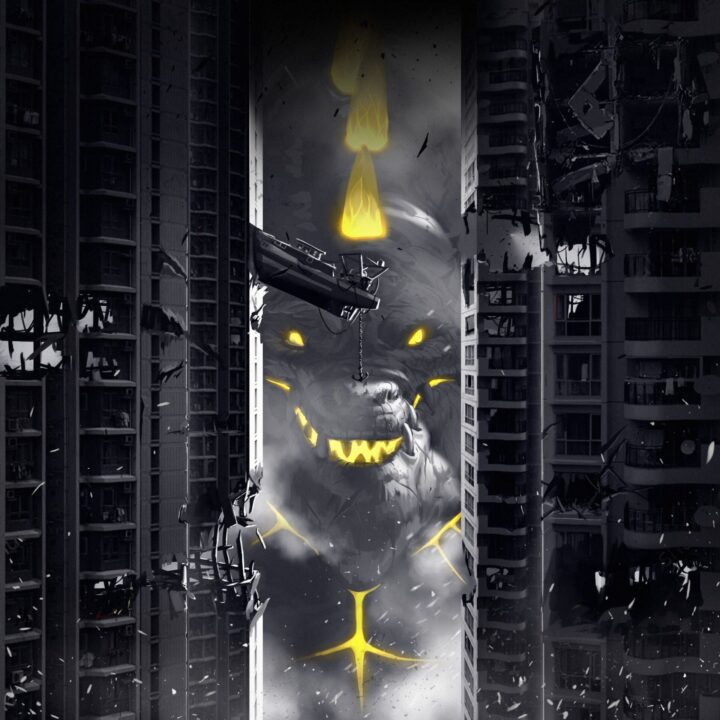Overview
Welcome to my detailed review of King of Tokyo: Dark Edition, a thrilling board game that activates the inner beast in family and friends alike. As we delve into this revamped edition, the darkness unfolds not just in theme but also in cunning strategy and heightened player interaction. Let’s unpack the radical redesign in dice-rolling mechanics, the tug-of-war of monstrous area control, and the intriguing shifts in interpersonal strategies that make every round a fresh battleground for supremacy. This deep dive explores the elegant mesh of simplicity and complexity that rallies gamers to the call of the mayhem-filled metropolis. Get ready to roar into the darkened streets of Tokyo where only the shrewdest of monsters claim victory.
How It Plays
Setting Up
In King of Tokyo: Dark Edition, set up begins with each player selecting a unique monster and taking its corresponding figure and character board. Next, lay out the Tokyo board, shuffle the power card deck, and deal the top three cards face up next to the board, forming the market. Each player starts with 0 victory points and 10 health points.
Gameplay
Players take turns rolling six dice. The symbols on the dice let players attack, heal, gain energy, or rack up victory points. Attacks force opponents out of Tokyo or wear them down, while energy can be used to buy power cards that provide unique abilities. Strategies evolve as players jockey for position in and out of Tokyo, balancing their thirst for dominion with their need to survive.
Winning the Game
A player wins by either being the first to reach 20 victory points or by eliminating all other monsters and being the last one standing. The dual paths to victory prompt players to adapt swiftly, building up their monster to either crush the opponents or outpace them on the scoreboard for a strategic win.
Want to know more? Read our extensive strategy guide for King of Tokyo: Dark Edition.
Mastering the Monstrous Dice Roll
In the heart of every great board game enthusiast lies a yearning for control amidst chaos, and nowhere is this dance more thrilling than in the dice-rolling in King of Tokyo: Dark Edition. As I rolled the oversized black dice across the table, the satisfying clatter became a symphony forecasting either victory or defeat.
Calculated Chaos
Starting off, every chuck of the dice-filled my gaming group with tension. Yet, as we grew into seasoned city-stompers, skilled decision-making surfaced. Conserving energy for detailed abilities turned lucky rolls into planned endeavors. Fond memories swirl of those clutch heals, game-winning smashes relied on carefully hoarded dice rerolls.
Adapting to Adversity
Then there’s adaptation – pivotal in an unpredictable landscape like King of Tokyo. The knack for switching tactics on the fly can salvage a poor roll. An example that comes to mind: rebuffing heart results in injury on the brink of being knocked out. Yes, dice may determine fate, but it’s your mastery that sketches triumph.
Now, bask in the satisfaction of a formidable dice strategy, before we breach into the murky territories of Monster Control Area Dominance.

The Tussle for Tokyo: Area Supremacy
Control is the beating heart in King of Tokyo: Dark Edition, where territory means triumph. Turning my once-meek Meka Dragon into a behemoth of Tokyo City always had friends eyeing me warily. Each session, the dice sided with one monster, and swiftly, Tokyo became their kingdom – the ultimate area dominance.
Strategic Occupancy
In one memorable game, my creature’s claws clutched Tokyo despite the barrage of attacks. Yet, it’s not just about brute force; strategy intertwines with occupancy to outmaneuver opponents, upping the stakes.
Defensive Aggression Ratio
Remarkably, it’s the balance between aggression and holding your ground which creates electrifying dynamics. Bluffing and gauging others’ intentions were vital for dominance. Stay tuned for how such encounters naturally evolve into Player Interaction Strategy Shifts in my next section of the review.

Reading the Room: Strategy Shifts
One unforgettable night, the energy at our gaming table was palpable as we dived into King of Tokyo: Dark Edition. Unexpectedly, the game’s player interaction mechanics led to shifting alliances and betrayals.
Diplomacy in the Den of Monsters
Initially, everyone was cordial, but as the city throbbed with our monster’s roars, players started forging silent pacts with sidelong glances. Here, the game brilliantly shines, emphasizing the necessity to change strategies; not only reacting to the dice but the players behind each monster.
The Tides of Conflict
As Tokyo’s city limits clashed amid our cheers and groans, I was forced to pivot my strategy. I had to decide whether to heal or attack, pondering not just my survival, but also who to trust. In King of Tokyo: Dark Edition, such decisions are everything. Despite my best efforts, my lightning lizard met its demise.
So, would I recommend this dance of dynamic decision-making? Absolutely!
Conclusion
As we conclude this review, the shadows cast by the skyscrapers of King of Tokyo: Dark Edition fade, but not its impression. Navigating this cityscape, we’ve rolled dice girded with power, debated strategies amid the growls of monsters, and reveled in the thrill of claiming supremacy. As the ferocious creatures return to their lairs, our review breaks into light – this game enchants the board with mere presence. Great for gamers seeking a monster mash with catchy mechanics, friend-engaging gameplay, and those moments that etch into your memory—the pinnacle of what board games offer. Whether you relish tactical depth or pure escapism, this Dark Edition shines—highly recommended for night escapades in Tokyo’s gaming underbelly!


